#oakland cemetery atlanta
Text


Cemeteries are my favorite greenspaces
6 notes
·
View notes
Text
Public Records Investigation Preserve the Self-Respect & Legacy Of Bibb County GA Ancestors

The nationality and food interests of the ancestors who lived near Bibb County are special for their future generations. After all, they are the ones who support initiatives like the investigation of the public records in Bibb County (a land area of around 250 square miles in Georgia, GA). Diving deeper into the funding and charity activities narrates the desire to advance their rich heritage nationwide. Even the investigation criteria involved make the legacy reservation easy-going.
0 notes
Photo

Cemetery Statue
Oakland Cemetery
Atlanta, GA
March 14th, 2022
#oakland cemetery#cemetery#cemeteries#statue#graveyard#atlanta#georgia#places#travel#photography#my photography#photo
39 notes
·
View notes
Text

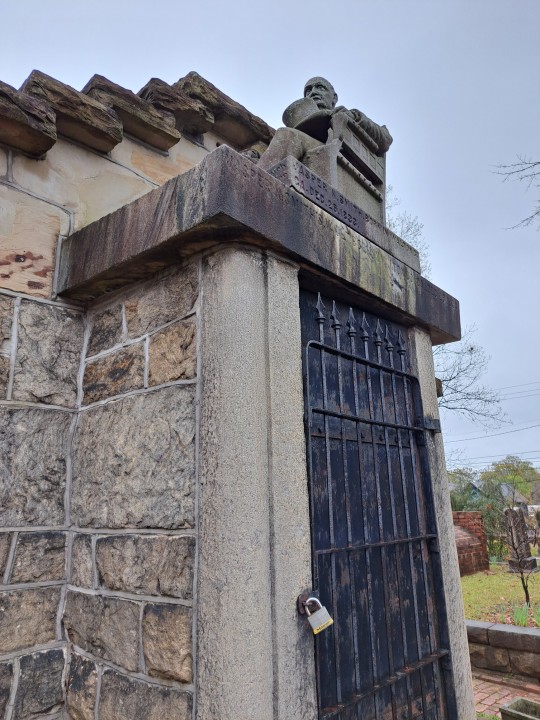
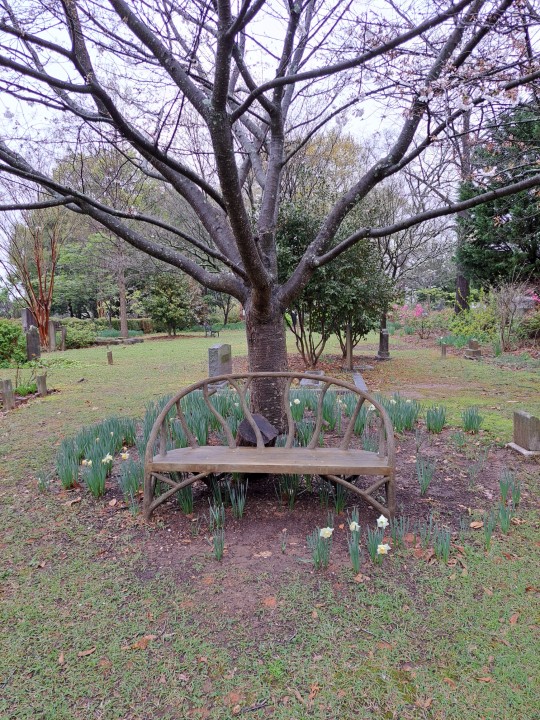


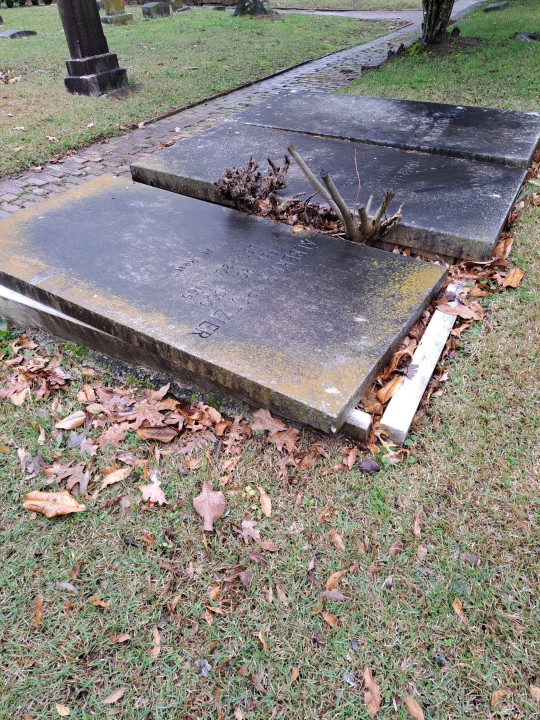


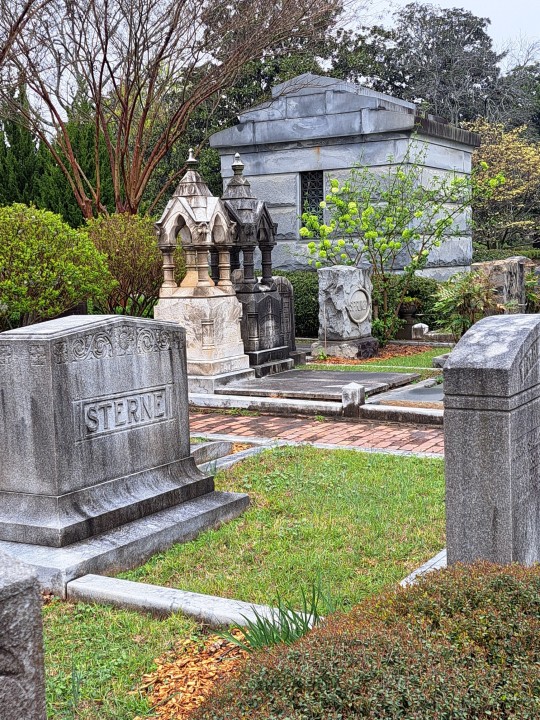
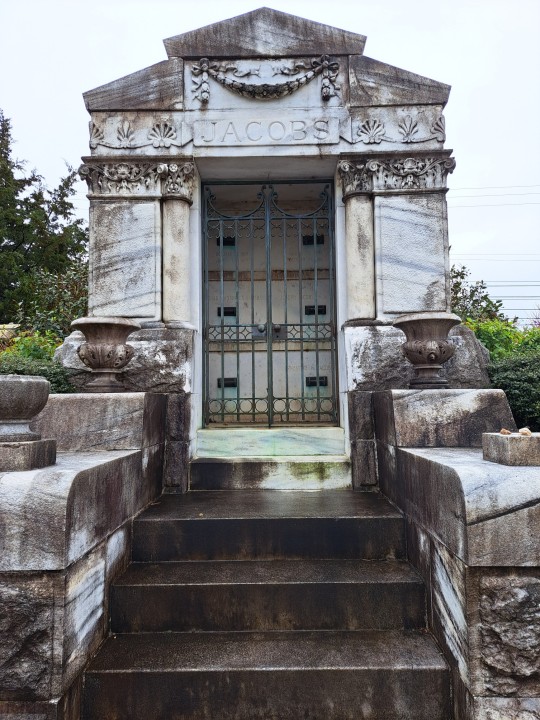
11 notes
·
View notes
Text
Atlanta removing ‘Lion of the Confederacy’ statue from historic Oakland Cemetery
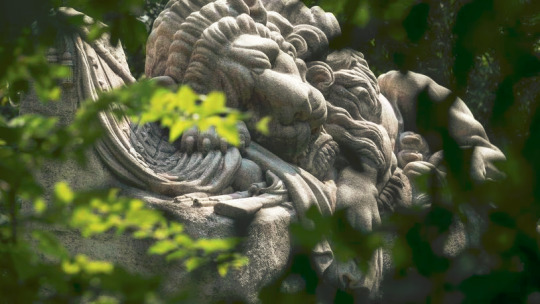
The city of Atlanta is set to remove a 127-year-old Confederate monument from Oakland Cemetery after it has repeatedly attracted vandals wielding sledgehammers and spray paint cans.
The City Council passed a resolution Monday evening declaring that the city should remove the “Lion of the Confederacy” monument and place it in temporary storage. The removal could happen as soon as this week, according to a member of City Council.
In recent years the statue has been defaced with graffiti, red latex and hit with objects like a pickaxe and sledgehammer.
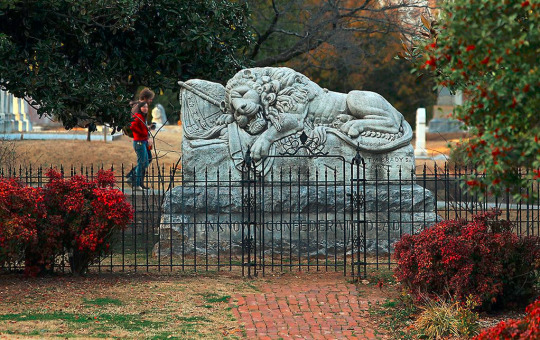
The statue was built by T.M. Brady and dedicated on Confederate Memorial Day in 1894 to honor the 3,000 unknown Confederate dead resting in Oakland Cemetery. The statue depicts a wounded or dead lion with its right paw resting on a cannonball partially concealed by Confederate flag.
The lion’s removal follows years of discussion among city leaders about how to address contentious Confederate iconography in Atlanta. In 2017, then-mayor Kasim Reed signed off on a 40-page report written by an 11-member panel that included recommendations related to Confederate symbols in the city.ExplorePhotos: Confederate memorials in metro Atlanta
Among the recommendations was the renaming of Confederate Avenue in the Grant Park and Ormewood Park neighborhoods to United Avenue, and attaching contextual markers to monuments like the Lion of the Confederacy and a 65-foot-tall Confederate obelisk also located inside Oakland Cemetery.
What sets both objects apart from Confederate monuments that sit in front of courthouses, state capitols or on city streets is that they are not “in your face,” but are part of the statuary of the cemetery, said Sheffield Hale, president and CEO of the Atlanta History Center.
Carved from Georgia marble, the lion is modeled after the Lion of Lucerne in Lucerne, Switzerland — an 1821 sculpture memorializing the Swiss guards massacred during the French revolution. The 30-foot-long Swiss sculpture is carved into the face of a low cliff, and is considerably larger than the Oakland version.
Atlanta City Council member Carla Smith, a sponsor of the legislation to remove the lion, led the panel established by Reed and was a major force behind the contextual markers.
While the committee never recommended the removal of the lion, vandals have left the city little choice but to move it to an undisclosed location, Smith said.

“They’ve smashed the face, the nose is completely missing and the cost of trying restore it is becoming too much,” Smith said.
“There’s been this constant vandalism and constant drain on city resources trying to protect and restore it,” said Councilwoman Natalyn Archibong, whose district includes Oakland Cemetery.
Richard Harker, executive director of the Historic Oakland Foundation, said that since October 2019, the marker had been vandalized at least eight times and that the interpretive signage below the statue, including the contextual marker, had been defaced repeatedly, sometimes in broad daylight. City employees have spent 150 hours rehabbing the statue after instances of vandalism.
Harker said six permanent security cameras had recently been installed in the park, including a couple aimed directly at the lion. Extra security guards had been hired in the last several months to deter vandals.
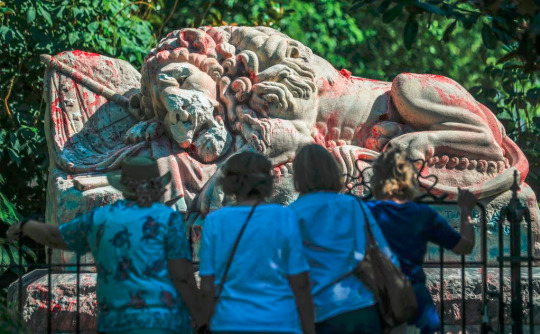
“The city’s history is good, bad, ugly and beautiful, and the city has to wrestle with all those legacies so we can move forward,” Harker said. “This is another example of the city, in a sad, unfortunate way, of doing so.”
The City Council approved a $33,000 contract with Superior Rigging and Erecting Co. to remove the lion statue. The city has not said where it will be located long-term.
The Confederate statue is listed by the Smithsonian as a historically significant piece of funerary art, Hale said, but removing it is a matter of public safety as well as preservation.
Hale also mentioned that the tension associated with the sculpture could lead to violence “adjacent” to the statue.
In the years since the city’s report on Confederate iconography came out, local governments around the state and nation have taken steps to remove monuments that glorify the Confederacy amid widespread protests against racism. The Georgia state law that makes it difficult for local governments to relocate or remove Confederate monuments was also updated in 2019 to include language that allows for “appropriate measures for the preservation, protection and interpretation” of monuments.
The Confederate obelisk in downtown Decatur came down last June. A Confederate monument built in 1993 in Lawrenceville’s downtown square was removed earlier this year.
#Atlanta to remove ‘Lion of the Confederacy’ statue from Oakland Cemetery#lion of the confederacy#atlanta#confederacy#confederate monuments
4 notes
·
View notes
Text



A full-moon walk through Oakland Cemetery? Don't mind if I do. What a lovely night.
13 notes
·
View notes
Text
The Ghostly Image and Travels of Ida Bennett Bass-Rome and Atlanta, Georgia
Ida Bennett Bass was the daughter of prominent Atlantans, Benjamin and Mary Elizabeth Bennett. She married Charles Bass, who was from a prominent Rome family. They had four children, but only one lived past infancy. During her third pregnancy, she died during childbirth while giving birth to twins. The son, Edward, died the next day, and her daughter Miriam lived another two months.
Ida’s…

View On WordPress
0 notes
Text


In love with the old magnolia trees 💚💚
1 note
·
View note
Text

Tony & Beverly in Oakland Cemetery, Atlanta, GA
105 notes
·
View notes
Text
✧˖° → Immediate Family

Mother: Eleanora McCoy.
Status: Alive
Age: 75
Location: Georgia, U.S., Earth
Faceclaim: Judi Dench
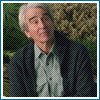
Father: David McCoy
Status: Deceased (Died at age 69.)
Death Date: October 10, 2252
Location: Oakland Cemetery, Atlanta Georgia
Faceclaim: Sam Waterson

Sister: Donna Withers
Status: Alive
Age: 45
Location: Centaurus
Faceclaim: Andie Macdowell

Daughter: Joanna McCoy
Status: Alive
Age: 13
Location: Georgia, U.S., Earth
Faceclaim: Dakota Fanning (May change)
#✧˖° → I told you people I don't need a doctor dammit - I AM a doctor![ Headcanon ]#I still might change some of these faceclaims#but for now#✧˖° → Queued
8 notes
·
View notes
Text
You gotta know when to fold 'em
Started the day in Little Five Points, named for Five Points in the center of town, but this one is Little. It's a funky neighborhood where P used to go to get 10-hole Docs at the Junkman's Daughter and a 3-hole nose at the piercing joint. It turns out that hippies and ne'er-do-wells are not early risers, and most things were closed, so we'll try again tomorrow.

Next up was World of Coca Cola. We'd heard was really good, but… we have notes. It was interesting to see historic memorabilia and taste some truly awful concoctions from Coca Cola fountains around the world. We were also somewhat horrified to realize that Coke owns like ALL the bevvy brands.


The Coke museum is right next to Centennial Olympic Park, where we caught the rings before heading to Oakland Cemetery. The cemetery is Atlanta's oldest public park and serves as the final resting place for many famous Atlanta natives. Kenny Rogers' tomb put this damned song in my head all day; P thought The Gambler missed an opportunity to use his own lyrics instead of a gospel as the epitaph. Really shitty note about the cemetery: when the original cemetery grounds became full, they dug up the Black section and replotted it to sell it to white families. The bodies they removed were put into the paupers' grave. But they kept the huge section for confederate soldiers (the losers, you'll recall).




While we were at the cemetery, the earth moved back home; 3 people texted to ask if our house was ok after the 4.4 quake centered in HP, so we sat down in the shade to check the cameras. The house was fine, but we were melting, so decided to head home.
After cooling off, we hopped in a Lyft for an early birdseed dinner at O-Ku. Rooftop dinner was great, but the mushroom app was so filling that P ended up eating only one roll. Note for next time: start with sashimi/nigiri.



On the way to dinner, our Lyft driver pointed out the one cinderblock building in a sea of new condos and said "If you guys like dive bars..." (Boy, did he have our number.) The Northside Tavern was everything we hope for - pool tables, 80s rock on the juke, and locals at the bar. They also have live music 7 nights a week - the drummer was setting up when we got there. We could have had a whole night at there, but we had an old friend to see.


The last time P was in Atlanta, Melissa took him to the Clermont Lounge, the city's oldest strip bar, located in the basement of the Hotel Clermont. They had a great time, and, well, let's just say he got the t-shirt. So of course it was on our list for this trip. No photos are allowed inside, but, well, P got another t-shirt.


Bad stripping is only entertaining for a little while, so we headed up to the lobby bar, which was empty and silent, but on a trip to the (haunted) bathroom, I discovered there's also a bar on the rooftop. Beers in hand, we headed up the (haunted) stairs, and lo, the best little (haunted) roof deck! It was a perfect end to the night, and we decided that if anyone asked us where to go in Atlanta, we'd list that (haunted) place before the Coke museum.



1 note
·
View note
Text
How Winona Ryder Made It to the Other Side
It is a warm afternoon in late spring, and Winona Ryder and I are walking through the Oakland Cemetery, a Victorian-style graveyard located in the center of Atlanta.
Large oak and magnolia trees shade the manicured paths as we stroll between the grand mausoleums and tombstones.
Ryder is wearing a straw bonnet, with a well-worn Leonard Cohen T-shirt under a black chore jacket that has a pin of a cartoon drawing of Jim Jarmusch affixed to its lapel.
Her eyes are rimmed with eyeliner, and her sneakers are splattered with paint.
Ryder is the first to admit that the word icon has become overused:
“Everyone uses it now, and they don’t know what a real icon is,” she says.
But she looks, as she always has, like the poster child for Gen X.
She defined cinema in the ’90s, embodying both a romantic moodiness and an idealistic dissatisfaction that few other actors have rivaled.
Gazing at the final resting places of others tends to prompt questions of longevity.
Ryder stops to read from a headstone:
“Life so fully lived, haven’t had to wait. Gone fishing.”
She tells me she has a deep admiration for the late actress Ruth Gordon, who won an Academy Award when she was 72 for Rosemary’s Baby and worked well into her 80s.
In past interviews, Ryder has said that she’s ready for her “Ruth Gordon years,” an allusion to a lengthy career that many who enter the industry as ingenues, as Ryder did to some extent, rarely pull off.
When she was 13, she auditioned for the role of Rina in what would become her first film, Lucas, which came out in 1986.
Rina, she recalls, was written in the script as unattractive.
This didn’t deter her.
“I wasn’t hurt by it,” she says. “I was more like, ‘Oh, cool. Can I be Ruth Gordon?’ ”
For the past six months, Ryder has been living in Atlanta, where she’s filming the final season of Stranger Things, with her boyfriend, Scott Mackinlay Hahn.

This September, she will star in the new Tim Burton film Beetlejuice Beetlejuice, the long-anticipated sequel to Burton’s original 1988 film, Beetlejuice, reprising the role of Lydia Deetz, which she first played when she was just 15 years old and helped catapult her to stardom.
Ryder is telling me how she found her way back to playing Lydia, who, like Ryder, is now a middle-aged woman.
“I felt bad for her,” she explains. “I feel INCREDIBLY LUCKY to have been able to LIVE this LIFE—however intense and overwhelming it got.”
In Beetlejuice Beetlejuice, Lydia is a pill-popping widow.
She hosts a television show called Ghost House, thanks to the fact that she still possesses the uncanny ability to see and speak to the dead.
She’s dating—but not in love with—her obsequiously slimy manager, Rory (played by Justin Theroux).
Her teenage daughter, Astrid (Jenna Ortega), hates her;
she finds Lydia’s gift a cheap gimmick, largely because the one person Lydia can’t contact from the afterlife is Astrid’s father, who tragically died in a fishing accident.
Life, it seems, did not quite go as planned for Lydia Deetz. “My mom,” Astrid declares at one point, “is a very broken person.”
Parts of Lydia remind Ryder of a younger version of herself. “In my 30s, I had two disastrous relationships that were—they weren’t wrong, but this was before you would ever think to Google someone,” she says.
“When I look back, I’m like, ‘What the hell was I thinking?’ I was dating the type of person who only lets you know a few weeks in that they’re in a relationship with someone else. And you’re just like, ‘What the fuck?’ ”
Not too long ago, Ryder read through her diaries from that period of her life.
“You clearly write when you’re depressed or upset. I tend to not write when I’m really happy,” she says.
“I was going through them and just asking myself, ‘How?’ I was clearly trying to deal with …” Ryder trails off. “It was very sad. I was clearly trying to believe the best and to give grace to myself. But I was taking care of everything but myself.”
Ryder’s 30s were a well-publicized rough patch.
After a meteoric rise in her teens and 20s, landing roles in era-defining films like Heathers, Mermaids, Reality Bites, and Little Women and working with renowned directors such as Martin Scorsese and Francis Ford Coppola, Ryder was burnt out.
Work had been nonstop, and the celebrity that followed put her personal life in the center of an unrelenting spotlight.
Following her 2001 arrest for shoplifting and the tabloid scrutiny that followed, she retreated from the spotlight—a period that, for Ryder, was as much about regrouping as it was stepping out of a life she’d inhabited since her teens and figuring out what she wanted out of it all.
It wasn’t until she played an aging ballerina in Darren Aronofsky’s Black Swan in 2010 that she finally felt her career had turned a corner.
“That was a very liberating thing, because I was playing my age. … And I think in a lot of people’s minds, that really helped. I sort of graduated,” she told The New York Times in 2016.
Now 52, Ryder is in a much different place in her life and work, inhabiting more of an elder-stateswoman role.
She refuses, for example, to wear heels on the red carpet, preferring to style herself (a rarity in Hollywood), either hiding her boots with a floor-length dress or incorporating them into her outfit.
“I actually made a conscious decision, maybe six years ago,” she says.

The Winona Book, published last year by Idea Books, features candid Polaroids of her by Robert Rich, the former vice president of public relations for Marc Jacobs, who became her close friend and whose basement office below the Marc Jacobs store in New York’s SoHo neighborhood was a haven for celebrities looking to remain undetected.
The book achieved a cultlike status and sells for up to $300 on eBay.
She has been with Hahn, founder of the sustainable organic-cotton company Loomstate, for the past 14 years.
(The two met at the premiere of Black Swan, when Hahn, who failed to recognize Ryder, complimented her for her work in The Fifth Element, a film in which she never appeared.)
Hahn, who joins us during our cemetery walk, is handsome and soft-spoken.
He has a distinctly grounding presence, serving, seemingly, as a kind of ballast to Ryder’s more windblown life as an actor.
“He’s so great. He really is. I’m really lucky,” Ryder says.
They will soon return to either New York City, where they rent, or Los Angeles, where she owns a house.
She and Hahn want to move, but they’re not entirely clear as to where.
“She definitely HELPED me FEEL less ALONE,” says Jenna Ortega.
Ryder is nervous about the upcoming election.
Her parents—established writers and left-wing intellectuals—decamped from Northern California, where Ryder was raised, to Canada after George W. Bush was re-elected in 2004.
Uncertainty looms on the horizon.

Ryder—who can careen from topic to topic in delightful digressions—lists why:
the college-campus protests,
Jared Kushner’s statement about developing Gaza,
the carceral system,
and Joe Biden’s chances of beating back Trump in the general election.
“It’s just a scary time,” she adds.
Soon after the first Beetlejuice premiered, there were rumors that Burton was at work on a sequel.
Supposedly, a script for Beetlejuice Goes Hawaiian once existed.
“Beetlejuice Goes to Outer Space, Beetlejuice does whatever,” Burton says.
“There’d been talk about it, but I never really understood why it was popular. And this was when people didn’t talk about sequels.”
In the intervening decades, though, Ryder and Burton kept in touch, meeting secretly to discuss making a second Beetlejuice.
“There were a lot of times my agents didn’t know that I was meeting up with him,” Ryder says.

Beetlejuice tells the story of Barbara and Adam Maitland (played by Geena Davis and Alec Baldwin), a young couple living in Winter River, Connecticut, who tragically die in a car accident only to discover, to their surprise, that they have become ghosts.
Their peaceful country home has been sold to the obnoxious and ostentatious Deetz family, which includes Charles, a wealthy real-estate developer;
his wife, Delia, a sculpture artist (played brilliantly by Catherine O’Hara, whose future husband, Bo Welch, was the production designer);
and Charles’s daughter from his first marriage, Lydia.
The Maitlands call upon an ancient trickster demon named Beetlejuice (Michael Keaton) to help scare the Deetz family away, as their extravagant renovation and garish art collection have obliterated all calm and happiness from their (now dead) existence.
As a director, Burton is a first-class world builder whose imaginative leaps have kept him distinctly out of step with his peers.
Unlike other cult films from the 1980s and ’90s that have developed a dated patina over time, Burton’s work often feels suspended in another universe altogether.
The world of Beetlejuice exists in a strangely gothic contemporary America, one where ghosts blast Harry Belafonte at full volume and where a demon can don a black-and-white-striped suit that looks like it could have been designed by the Antwerp Six.

As Lydia puts it so well in the first film: “I myself am strange and unusual.”
Burton had made his directorial debut a few years prior with Pee-wee’s Big Adventure.
Ryder was a virtual unknown, with just Lucas under her belt, a role for which she had dyed her hair black.
It’s a style choice she has more or less maintained throughout her career.
If you watch Lucas, you can see flickers of Lydia Deetz in Ryder’s Rina:
Both are young women in possession of an innate sense of cool.
“Tim’s a terrific caster,” says Keaton. “He doesn’t always get credit for that, but if you look through his films, he always casts really, really well, and that includes Winona.”
“When I met Winona, she reminded me of how I felt as a teenager,” says Burton.
“And she’s got what I love with certain actors. She can say something with just her eyes. … There’s a soul coming out. So without dialogue, without anything, there’s something there. It’s why you make movies.”
“Everyone wanted to be Lydia after watching the first film,” says Ortega.
“She’s so self-assured and smart and ahead of her time.” Indeed, Beetlejuice unlocks a deep truth about what it feels like to be a teenager and what it’s like to grow up in an increasingly alienating world. When Lydia discovers that she can see ghosts, it reveals a kind of supernatural exceptionalism to her, which is something most teenagers hope for in their lives: for something to rescue us from the banality of the ordinary. That is the appeal of Lydia Deetz. But it took Ryder to give Lydia a particular vulnerability, a kind of softness and naivete that endears her to everyone. “I feel like MOIRA ROSE of Schitt’s Creek and DELIA DEETZ are SISTERS”
As Ryder recalls, her first encounter with Burton was unassuming.
That day, she strode onto a soundstage at Culver Studios to meet Burton, with her father waiting for her in their car. Character actors were on their lunch breaks, a woman was dressed in a corset, and someone else was in an animal costume with the head removed.
“I was sitting there, and this guy came in holding a folder, who I thought was a messenger or something. We started talking about Edward Gorey. About half an hour into this conversation, I feel like I’m making a friend, and I ask him, ‘Do you know Tim Burton? This is his office, right?’ And he went, ‘Well, that’s me.’ I didn’t know that directors could look like Tim. He was 27. Immediately, I was like, ‘Oh, shit. I’m sorry. Do you want me to read?’ He told me no. I remember feeling like ‘Oh, God, did I blow it?’ I had this fear when I got up to leave, and I was like, ‘Hey, man, it was really great meeting you. Good luck, this sounds really great.’ I added, ‘If you want, I can come back.’ But he told me that he wanted me to do it. That had never happened. I’d never been offered a part without a reading for it or on the spot like that, ever.”
“She probably thought I was some kind of weird stalker,” says Burton.
“But I had that effect on people. I didn’t speak very well, so people didn’t understand what I was saying. In fact, they still don’t. But again, that’s why I feel like we connected, because I didn’t scare her away. She ultimately got it and got who I was.”
Beetlejuice was a resounding success.
It would also form the beginning of a sustained relationship between the director and both Keaton and Ryder, with Burton casting them in his subsequent films.
Keaton would play the titular Caped Crusader in 1989’s Batman and 1992’s Batman Returns, and Ryder would star as Kim Boggs in Edward Scissorhands in 1990, opposite her then-boyfriend, Johnny Depp.
She describes working with Burton as a kind of “telepathy,” one where the director doesn’t finish his sentences and gestures his intentions but she still, somehow, understands perfectly what he’s trying to convey.
“He could be like, ‘Maybe, I think, yeah. You know?’ And I’ll be like, ‘Yeah, totally. I know.’ ”
Did they understand they were making a cult film?
Something that would spawn a Broadway musical and an endless parade of Halloween costumes, memes, imitations, and subtle references (“I do feel like Moira Rose of Schitt’s Creek and Delia Deetz are sisters,” says Ryder)—an unrelenting obsession the world over?
“We weren’t quite sure what we were making,” recalls Keaton. “We just knew this guy had something.”
“I THINK, ‘What if I just HANG IT UP?’ And then you start THINKING of ALL THE PEOPLE that you would WORK with if they CALLED, and that’s NOT really RETIRING. That’s just BEING AVAILABLE.”
We retreat from the afternoon heat to the shade of a large magnolia tree whose long, jointed branches are something out of a Burton set.
Hahn points out the tombstone of the golfer Bobby Jones, which is decorated in white golf balls, and later we stumble upon Kenny Rogers’s grave.
Hahn plucks a magnolia flower from the tree’s bough and encourages us each to smell it.
The scent is floral and citrusy, with a darker, more vegetal sensibility.
I ask Ryder about her Jarmusch pin.
In 1991, she played a young taxi driver in his film Night on Earth.
Working on a big show like Stranger Things can be draining, she admits, though she’s ever grateful for the opportunity.
“And then I think, ‘What if I just hang it up?’ And then I think, ‘Well, if Jim wanted me to do something, I would do it,’ and then you start thinking of all the people that you would work with if they called, and that’s not really retiring. That’s just being available,” she says.
We are near a large Confederate memorial, and Ryder begins musing on history, war, and post-traumatic stress disorder.
When did the term PTSD first appear, she wonders?
“I know it was once called shell shock,” she says.
We discuss how it is more commonly understood today that people other than veterans can have PTSD.
Ryder is quick to acknowledge the unparalleled violence and trauma of war.
Still, our conversation somehow reminds me of what Ortega tells me about Ryder, how the actress was incredibly generous with her when they first met, which was right around the time Ortega’s own star was taking off with her portrayal of Wednesday Addams in Burton’s 2022 Netflix series Wednesday.
“She definitely helped me feel less alone,” says Ortega.
“It’s a very isolating experience and a scary one. Being able to speak to somebody who had witnessed that firsthand, maybe even more, was a great source of comfort for me, and I can’t thank her enough for that.”
These days, Ryder is a self-professed Luddite and is not on any social media, maintaining a blissful ignorance of what the public has to say about her.
Earlier this year, Kendall Jenner wore a 1999 archival Givenchy dress designed by Alexander McQueen to the Met Gala, claiming she was the “first human” to ever wear it.
Quickly, though, photographs circulated online of Ryder wearing the dress the same year it was designed in a photo shoot for Flaunt magazine.
Ryder was silent on the matter at the time. “I heard about that,” Ryder says when I ask her about it.
Liv Liberg
“I do remember that photo shoot. It was with my dear friend [and makeup artist] Kevyn Aucoin,” she says.

“And I did wear it. I have pictures. The photographer gave me some prints. I’m in a tartan in one of them, and I’m in that dress.”
The next day, Ryder texts me a photograph of herself as a 13-year-old.
This was from before she had been cast in anything, before she nabbed the role of Veronica in Heathers just a few years later, in part by going to the mall and asking for a makeover to prove she could, in fact, look like the pretty and popular one.
Her hair is boyishly cropped, and she’s wearing a plaid cardigan over a Clash T-shirt.
She looks beautiful and impossibly cool.
I can see instantly how the world fell in love with her.
Even now, though she has managed to mature in the public eye, she still possesses what one director told me was a “romantic fragility” that adds an immeasurable depth to whomever she plays onscreen.
We exchange a few more messages.
Did she ever think she had PTSD from those early days, when the white-hot light of the spotlight was focused so intensely on her?
“The answer would be no,” she wrote back the next day.
“I feel incredibly lucky to have been able to live this life—however intense and overwhelming it got, it’s NOTHING compared to what it is now with the internet and social media. I just find myself feeling tremendous empathy toward people who have sacrificed so much.”
A little bit later, I’m struck by a silly impulse to know one last thing after our cemetery walk and I send her another text:
Does she believe in ghosts?
The afterlife?
We all know what Lydia Deetz would say. But Ryder doesn’t respond.
0 notes
Text

Unveiling Bibb County's Legacy: Accessing Public Records
Journey through the annals of Bibb County, Georgia's history by public records bibb county ga. From land deeds to court documents, these records offer a window into the county's past, illuminating the lives of its residents and the events that shaped its development. Whether you're tracing your family's roots or researching local history, explore Bibb County's public records to uncover fascinating stories and gain a deeper understanding of its rich heritage.
0 notes
Photo

Cemetery Statue
Oakland Cemetery
Atlanta, GA
March 14th, 2023
4 notes
·
View notes
Text
The House That Jack Built
"Uncle Jack" was actually Jasper Newton Smith, and his house was a three-story commercial building constructed on Atlanta's Peachtree Street in 1889. Decorative stone blocks were engraved with his home-spun philosophical messages. That structure was destroyed, but the blocks were incorporated into a second building. That one, too, was demolished for a MARTA (Metropolitan Atlanta Rapid Transit Authority) structure in the 1970s, but several blocks were set in the southwest entrance to Peachtree Central Station, including one proclaiming THIS IS THE HOUSE THAT JACK BUILT.
None of this would surprise Smith, because he watches form his long-term residence in Atlanta's Oakland Cemetery. He constructed himself a substantial mausoleum. At the top, a stone looks downtown, keeping an eye on his property. Legend says you may find the chair empty at night while Uncle Jack takes a stroll.
0 notes
Text

When you stand on the eastbound platform of King Memorial MARTA Station you get a view of a 19th century cemetery, plus a freight-rail yard. These tracks sit on top of the old Georgia Railroad corridor that was built to connect Augusta to Atlanta.
Completed in 1845, two years before a charter was approved for the new City of Atlanta, the Georgia Railroad was originally used for both passenger trips and freight. But by the early 1960s passenger service was gone and it became solely a freight line.
Meanwhile, Oakland Cemetery was originally founded as Atlanta Cemetery in 1850, only five years after the rail line was completed.
So when you look at this scene, you're getting a view of institutions that date to the beginnings of Atlanta. Pretty cool.
42 notes
·
View notes